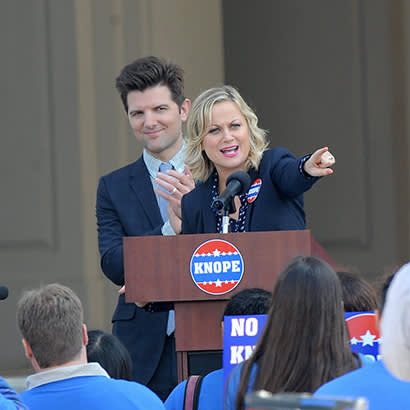
We often get asked in our line of work, “Is it like the show?” The show in question is the sitcom Parks and Recreation. Leslie Knope, deputy director of the parks department in fictional Pawnee, Indiana, wants to beautify her town by assisting local nurse Ann Perkins in transforming an abandoned construction site into a communal park. Numerous obstacles impede the progress of what ought to be a rather straightforward project! It’s hilarious, but is it an accurate depiction of working for a park and recreation department in local government? The answer is yes! Well, sort of.
Conservation
As one of her community projects, Leslie organizes a cleanup at Pawnee River every Saturday. The National Recreation and Park Association (NRPA) has three pillars, and Conservation is one of them! Many park and recreation departments are affiliated with Keep America Beautiful. This leading national nonprofit inspires and educates people to act every day to improve and beautify their community environment. Professionals in parks and recreation also concentrate on mitigating the effects and causes of climate change. They provide communities with essential green spaces that promote human-nature interaction and create healthy habitats that support the animals and plants beneficial to the ecosystem.Want to help? Raise awareness of pollinators nationwide by hosting a Parks for Pollinator BioBlitz in your community during September. In September 2024, NRPA will be hosting the sixth annual Parks for Pollinators BioBlitz.
Health and Wellness
Leslie opens a farmers’ market to promote a healthy lifestyle because she’s identified Pawnee’s obesity rate as a critical issue. It looks like she also believes in the second NRPA pillar: Health and Wellness. Parks and recreation provides access to extensive services and initiatives that support and promote health and well-being. Let’s look at the Healthier Because We Live Here Wellness Hub movement in Shawnee, Kansas, focused on bettering the lives of vulnerable populations. The Hub is not found at a specific Shawnee Parks and Recreation facility because it’s on the go! Their Mobile Wellness Fair, a regular pop-up that takes place in areas designated as needing assistance, gives access to a range of support services, such as a mobile food pantry, dental and medical exams, and immunizations. View the Community Wellness Hubs Toolkit here for suggestions and direction on how to address the changing health needs of your community.
Equity
“Any child should be able to play in any park, regardless of wealth or status,” said Leslie, and we agree! The idea that everyone should have access to parks came up repeatedly in the show and aligns with the third NRPA pillar: Equity. To act, we must first acknowledge past systemic inequities that have created very different lived experiences in communities just as Leslie does. Every municipality has its unique history, and Leslie often explains the meaning of each mural at Pawnee Town Hall while acknowledging the unjust times. For example, the Turnbill Mansion Wedding mural takes place in 1867 where the progressive Reverend Turnbill officiated a wedding between a white woman and a Native American chief in a park gazebo. The secret ceremony was beautiful, but word got out and the reception ended in bloodshed. Leslie ends up saving the gazebo on the historical register from being destroyed because the history must be represented.
Again, this is all fictional, but still an important similarity from the show. Going back to reality, before Central Park in New York was created as the country’s first major landscaped public park, it was known as Seneca Village, a community of predominantly African Americans, many of whom owned property. The city obtained Seneca Village properties with eminent domain, a legal doctrine that permits the government to appropriate private property for public use in exchange for payment to the proprietor. Approximately 1,600 people were displaced from the region by 1857. Despite receiving compensation, a lot of landowners felt their land was undervalued. Now, the Seneca Village Tour is offered at Central Park for visitors to understand this history and can request hearing loops with ticket purchase. You can read the Equity in Parks and Recreation story map here to find out how mistakes of the past shape our present mission of improving the quality of life for everyone.
Customer Service
Here lies a distinct difference between fiction and reality. Ron Swanson and April Ludgate come across as apathetic characters who avoid people and schedule meetings with them on made-up dates like Marchtember Oneteenth or June 50th. We promise this is never the case in real life, as customer service is always a priority, no matter the department. For instance, the City of Irving, Texas, introduced an organization-wide initiative, Serving Irving with Pride, to enhance customer service interactions among employees and City of Irving stakeholders. The program serves as a foundation for City of Irving's customer service expectations and works in conjunction with department-specific protocols and procedures. Leslie would love this idea and turn it into a binder!
Conclusion
The public input meetings, special event planning and Valentine’s Day dance socials are other aspects of how working in parks and recreation is like the show. It is the fun department after all! Want to know which Parks and Recreation character you are? Click here to take the quiz! No matter the character result, all park and recreation professionals are integral to realizing NRPA’s vision.
Rebecca Ortiz (she/her) is the athletics and rentals coordinator for City of Irving (Texas) Parks and Recreation Department.


